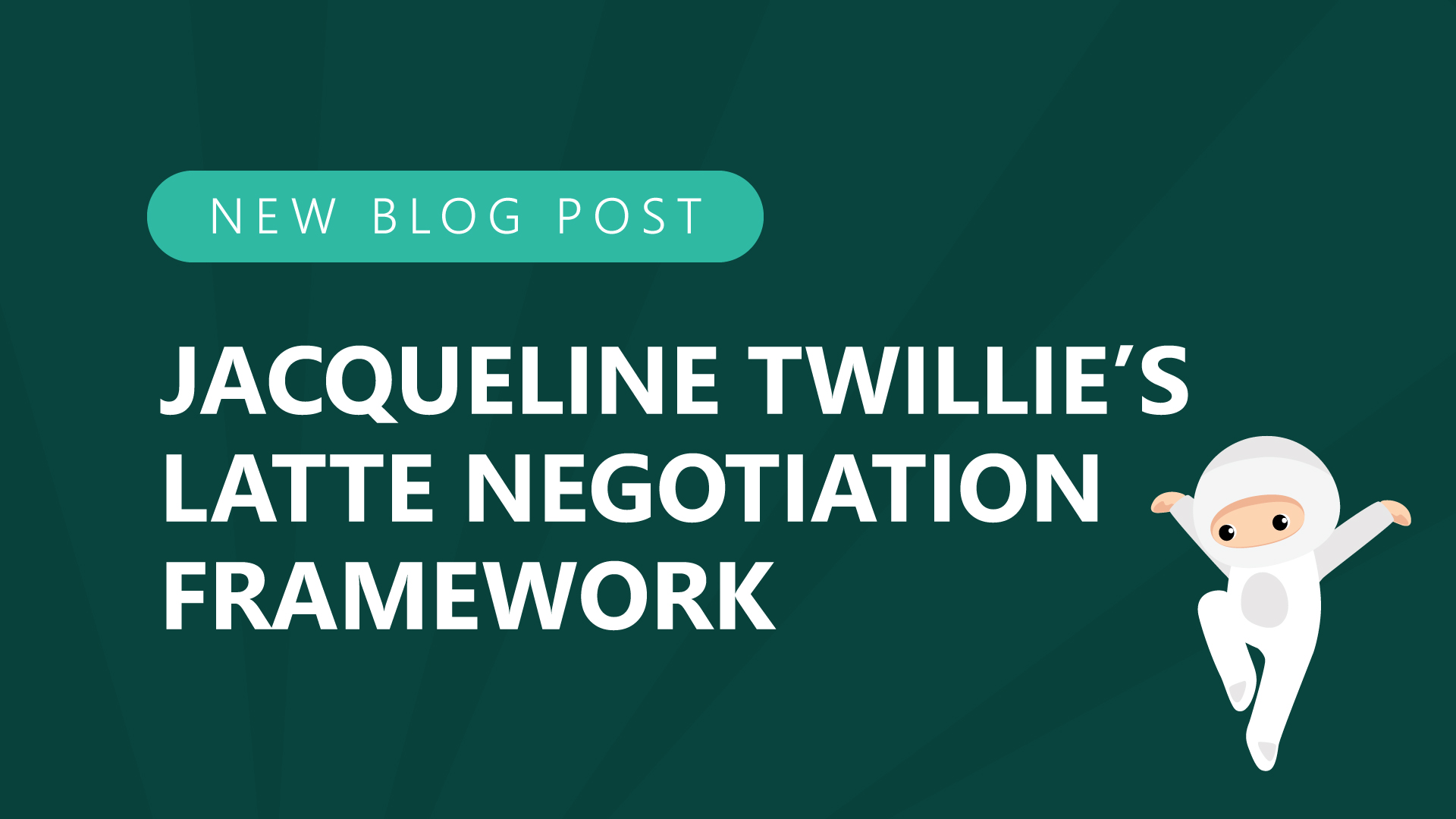How do we help women negotiate with confidence and close the gap? Jacqueline Twillie developed the LATTE Negotiation Framework to help women bridge the gap. She was preparing for a negotiation talk and wanted an acronym. She needed a simple way to break down negotiation that would ease nerves and open people’s minds to hear what she wanted to deliver. It’s a five-party acronym that’s a checklist. A pilot has a pre-flight checklist to ensure the smoothest flight possible. That’s what the LATTE Negotiation Framework is.
- Look at the details
- Anticipate the challenges
- Think about your walk-away point
- Talk it through
- Evaluate options
It’s a simple checklist that can help both new and seasoned negotiators ensure success. So what does the framework look like?
Step #1: Look at the details
People make assumptions because they know an industry or they’ve done something many times. But Jacqueline is quick to note that making assumptions will be your downfall. It doesn’t allow you to uncover new information. It’s a reminder to be open-minded and to challenge the assumptions that you have, and focus on going back to the basics.
When you’re new, you spend a lot of time looking at the details. Many people assume that the counterparty will act a certain way or assume the market is the same as it always has been. When people make assumptions, they get into sticky positions because they’re not dealing with reality.
Step #2: Anticipate the challenges
Many people walk into a negotiation overly confident and don’t think about the challenges that might come up. They don’t plan for the worst or what might go wrong. When Jacqueline was a high school student, she participated in the Naval Junior ROTC program. They drilled Murphy’s law into her brain: Anything that could go wrong would go wrong.
So when it comes to negotiation, she’s always thinking about what could go wrong and what her response would be. She doesn’t want to look back and say, “I should’ve done this” or “I should’ve done that.” So you need to think about your responses in advance and prepare multiple responses to each scenario. It can help you think two steps ahead so that you’re solid in what you’re presenting.
Step #3: Determine your walk-away point
The idea of walking away can be intimidating. When you think about walking away from a deal, it might mean not getting a deal. How do you calm your nerves and prepare yourself for that eventuality?
Jacqueline points out that BATNA is a common negotiation phrase. What are your alternatives to a negotiated agreement? When do you need to take a step back? When do you bring in a bad cop or good cop to move the conversation along?
The Harvard Business Review did a study a few years ago. They found that the people who imagined that there was an alternative fared better than those who thought there were no alternatives. Jacqueline has seen people get so emotionally invested that they put blinders on. They go at it with all they’ve got.
If you find yourself in a position where the stakes are high, and you need this deal to come through, you want to imagine that there is an alternative.
Step #4: Talk it through
Practice and role-play are important. Jacqueline coaches women to role-play with a friend. You need to be aware of your body language as much as the words you say. If you’re emotionally invested, it can be seen in your body language. You have to be able to control that. Jacqueline is from the South, where she jokes that they’re known for wearing their emotions on their face. You have to role play and then watch it back. Take notes, critique yourself, and decide what to change or switch up. Role-play with different people to see how you respond differently, and then adjust your approach again.
Step #5: Evaluate your options
Jacqueline has found that women tend to approach the conversation from the framework of, “I’m lucky to have this opportunity.” They are so emotionally invested, and it feels like a gift. So when they reach the end of the negotiation, they struggle to objectively evaluate the deal. You have to be objective and be able to distinguish between a good deal and a great deal. You strengthen your negotiation skills and get better outcomes for all parties involved.
What an amazing framework to follow to reach success in your negotiation. To hear more of our conversation about the LATTE Negotiation Framework, head on over to episode #217 of the Negotiations Ninja podcast!

